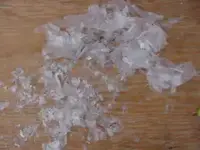I am starting to save pre-1983 copper pennies.
During the early 1970s, the price of copper rose to a point where the penny almost contained more than one cent's worth of copper. This led the Mint to test alternate metals, including aluminum and bronze-clad steel. Aluminum was chosen, and over 1.5 million of these were struck and ready for public release before ultimately being rejected. About a dozen aluminum cents are believed to still be in the hands of collectors, although they are now considered illegal, and are subject to seizure by the Secret Service. One aluminum cent was donated to the Smithsonian Institution.
The cent's composition was changed in 1982 because the value of the copper in the coin started to rise above one cent. Some 1982 cents use the 97.6% zinc composition, while others used the 95% copper composition. In 1943, at the peak of World War II, cents of zinc-plated steel were made for a short time due to war demands for copper. A few (the U.S. Mint reports forty) copper cents from 1943 were produced from the 1942 planchets remaining in the bins. Similarly, some 1944 steel cents have been reported. Following 1943, salvaged ammunition shells made their way into the minting process, and it was not uncommon to see coins featuring streaks of brass or having a considerably darker finish than other issues.
The price of copper later returned to profitable levels. The Mint did not need to change the cent's composition again until 1982.
As of November 2, 2006, the price of copper is $3.31 per pound and zinc is $1.93 per pound. At these prices, the pre-1982 copper cent contains 2.224 cents worth of copper metal; it is now potentially profitable to melt them down. Presumably with the rapid rise in price for zinc, the US Mint will have to find another alternative. The scrap zinc in a modern cent is worth 1.1 cents. With the costs of manufacturing and distribution, the net cost to produce one cent is about 1.4 cents, significantly higher than the face value of the coin.
People with young ears can hear the difference between the bronze and copper pennies and the newer, zinc years: simply "flip" the coin, giving it a good, solid strike. The predominantly copper pennies produce a "ringing" sound in the 12 KHz range. The zinc coins do not ring.



 but always buy the best you can.
but always buy the best you can.



